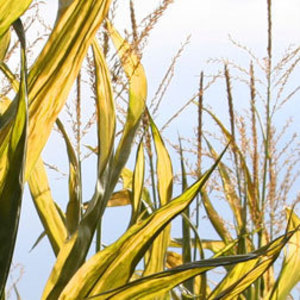Enhanced Crop Forecasting for Ethanol Producers

July 24, 2021
BY Aline Glick
In early June, there were already murmurs of the grain market tightening, due to factors such as overseas demand for animal feed and challenging growing conditions in other markets. Accurate, geographically targeted production forecasts have long been the holy grail of grain buying for ethanol plant managers—they would make it possible to optimize the timing of grain purchases, armed with advance knowledge of production for a local draw area. The combination of data-rich remote sensing and new machine learning approaches is creating a revolution in yield forecasting, with accurate and scalable solutions. Directing these technology innovations to the ethanol industry can help ethanol plants survive and thrive based on the spread they are able to achieve when selling ethanol, relative to the cost of acquiring grain.
Aspiring Universe Corp. has launched YieldScreen, a product to help ethanol plant managers better anticipate grain availability from their local draw areas, enabling better timing of grain purchases in order to optimize cost, and, ultimately, profit on their ethanol output. Until now, grain buyers have relied largely on a combination of word of mouth, gut feeling, and government reports—which are not always accurate predictors due to lag—to inform the timing of grain purchases. While wisdom and experience are valuable assets for these decision makers, the method is incomplete and inherently biased, and can result in significant reduction in profitability or worse in years with dramatic weather events. YieldScreen provides unbiased, accurate grain production forecasts long before government reports are available.
The company’s CEO, Daphne Preuss, remarked, “Our methodology starts at the field level, enabling purchasers to better choose their suppliers. It is well-suited for ethanol plant managers who are frustrated by the untargeted, incomplete, and biased data that is otherwise available to them. YieldScreen reports are delivered throughout the growing season, with accurate forecasts available months before NASS reports. We expect that YieldScreen’s unprecedented accuracy in forecasting production from custom draw areas will be a game changer for ethanol plant managers, allowing them to avoid disaster in the bad years, and maximize profits in the good.”
Aspiring Univere Corp., a 2019 spinout of the University of Illinois at Urbana-Champaign, has created a 20-year daily database at 100-foot resolution for every plot of farmland across the globe. The company integrates multiple remote sensing data layers, and uses biophysical-based process models, combined with artificial intelligence and supercomputing, to efficiently assess crop performance, water availability, management practices, nutrient use, and carbon retention. The result is a wide array of actionable insights from agronomy to sustainability, including seasonal production forecasts.
The company has already attracted a Fortune 500 client list drawn by the innovative science of founder and lead inventor Dr. Kaiyu Guan, who is also a leading scientist at the nexus of environmental science, engineering, and AI. Many of the custom projects for these clients have focused on carbon sequestration and other sustainability metrics. The company is now in the process of focusing the technology for specific applications. Guan commented, “We are excited to make these tools available, which are the result of 10-plus years of my team’s research at the University of Illinois, Stanford University and Princeton University. There are really no other options that can provide the combined accuracy, scalability and cost-effectiveness of this technology.”
More information about YieldScreen can be found at www.aspiringuniverse.com.
Author: Aline Glick
Head of Product and Marketing
Aspiring Universe Corp.
aline.glick@aspiringuniverse.com
Advertisement
Advertisement
Advertisement
Advertisement
Related Stories
The USDA significantly increased its estimate for 2025-’26 soybean oil use in biofuel production in its latest World Agricultural Supply and Demand Estimates report, released July 11. The outlook for soybean production was revised down.
The U.S. Energy Information Administration maintained its forecast for 2025 and 2026 biodiesel, renewable diesel and sustainable aviation fuel (SAF) production in its latest Short-Term Energy Outlook, released July 8.
XCF Global Inc. on July 10 shared its strategic plan to invest close to $1 billion in developing a network of SAF production facilities, expanding its U.S. footprint, and advancing its international growth strategy.
U.S. fuel ethanol capacity fell slightly in April, while biodiesel and renewable diesel capacity held steady, according to data released by the U.S. EIA on June 30. Feedstock consumption was down when compared to the previous month.
XCF Global Inc. on July 8 provided a production update on its flagship New Rise Reno facility, underscoring that the plant has successfully produced SAF, renewable diesel, and renewable naphtha during its initial ramp-up.
Upcoming Events










